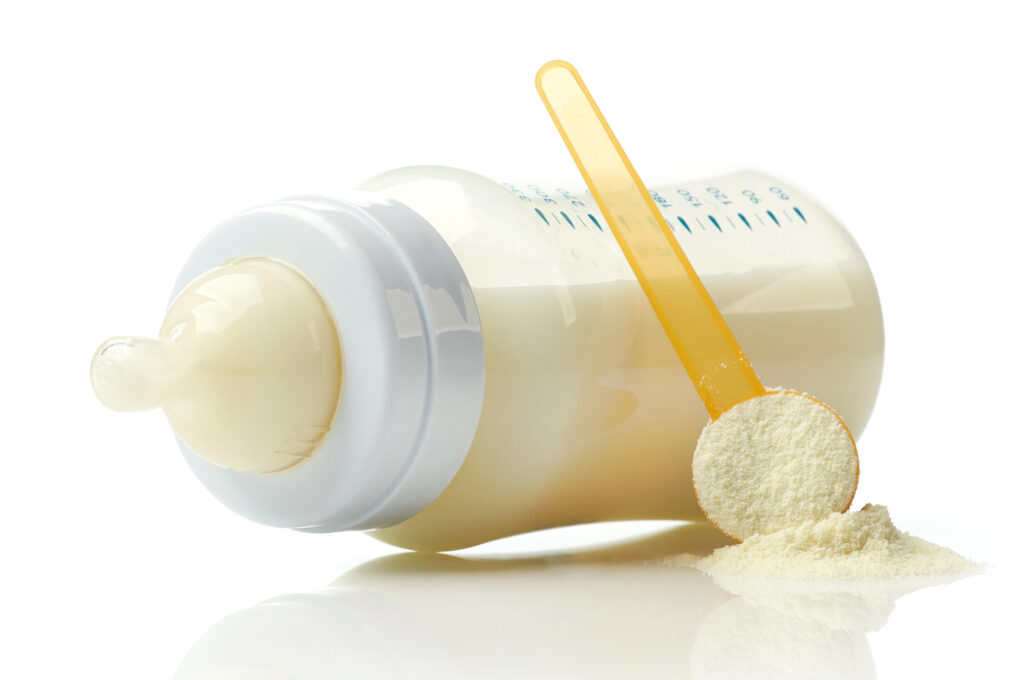Cronobacter sakazakii, the bacteria linked to recent baby formula shortages and the Abbott infant formula recall, could soon join the federal disease watchlist. In June, the Council of State and Territorial Epidemiologists (CSTE) will vote to decide if it will officially recommend adding Cronobacter infections to the list of nationally notifiable diseases to the US Centers for Disease Control and Prevention (CDC).
What is Cronobacter Sakazakii?
Also known as Enterobacter sakazakii, Cronobacter sakazakii is a bacteria that can cause severe infections, particularly in infants, and is associated with high mortality rates. It was first identified in 1958 by Dr. Yoshikazu Sakazaki in Japan, and was later renamed Cronobacter sakazakii in recognition of his contributions to the field of microbiology.
The bacteria is commonly found in the environment, including in water, soil and dry foods such as powdered infant formula. The bacteria is able to survive in these harsh environments for extended periods of time, which makes it difficult to control and eliminate.
In an outbreak that the CDC investigated last year, four babies were sickened, including two who died. All the infants had been fed baby formula manufactured at the same Abbott Laboratories plant in Sturgis, Michigan, triggering an extensive investigation by the US Food and Drug Administration (FDA) and ultimately stopping production at the facility for months.
Related: Abbott Baby Formula Plant Under Investigation by the DOJ
Symptoms of Cronobacter Sakazakii Infection
Infants are particularly vulnerable to Cronobacter sakazakii infections, as their immune systems are still developing and their digestive tracts are not fully formed. Infection can occur when infants consume contaminated formula or other food products. In some cases, Cronobacter sakazakii can also be transmitted from person to person, particularly in hospital settings.
Cronobacter sakazakii infection symptoms can include fever, irritability, lethargy, poor feeding and seizures. In severe cases, the infection can lead to meningitis, sepsis and other life-threatening complications. Infants who are infected with Cronobacter sakazakii require prompt medical treatment, including antibiotics and supportive care.
In response to the threat posed by Cronobacter sakazakii, the World Health Organization (WHO) and other organizations have developed guidelines for the safe preparation and handling of infant formula. These guidelines include recommendations for proper hygiene practices, such as washing hands before preparing formula, using sterile water and equipment and avoiding reusing formula that has been left out at room temperature.
Push to Make Cronobacter Sakazakii Reportable
Despite these efforts, Cronobacter sakazakii remains a significant public health threat, particularly in developing countries where access to safe water and sanitation is limited. That’s why stakeholders and lawmakers are hoping to add Cronobacter sakazakii infections to the list of nationally notifiable diseases to the CDC.
The addition of an illness to the national list of notifiable diseases can have a significant impact on the reporting and tracking of outbreaks. For example, after Escherichia coli O157 was added to the list in 1994 and reporting requirements were implemented in most states by 2000, the number of reported outbreaks tripled. However, it takes time for changes to be implemented.
If the CSTE votes to add Cronobacter sakazakii infections to the national list, the CDC will need to approve the recommendation. If approved, state and local governments will need to adjust their reporting laws and processes for doctors to report cases to health departments, which will then forward reports to the CDC. Data collection is unlikely to begin before the beginning of 2024, and it could take longer depending on state legislative sessions.
Currently, only Minnesota and Michigan require doctors to report Cronobacter cases, which can be diagnosed as sepsis or meningitis, conditions that can result from infection. But the push to add Cronobacter sakazakii to the federal disease watchlist is underway and the vote will take place next month.












Join or login to leave a comment
JOIN LOGIN